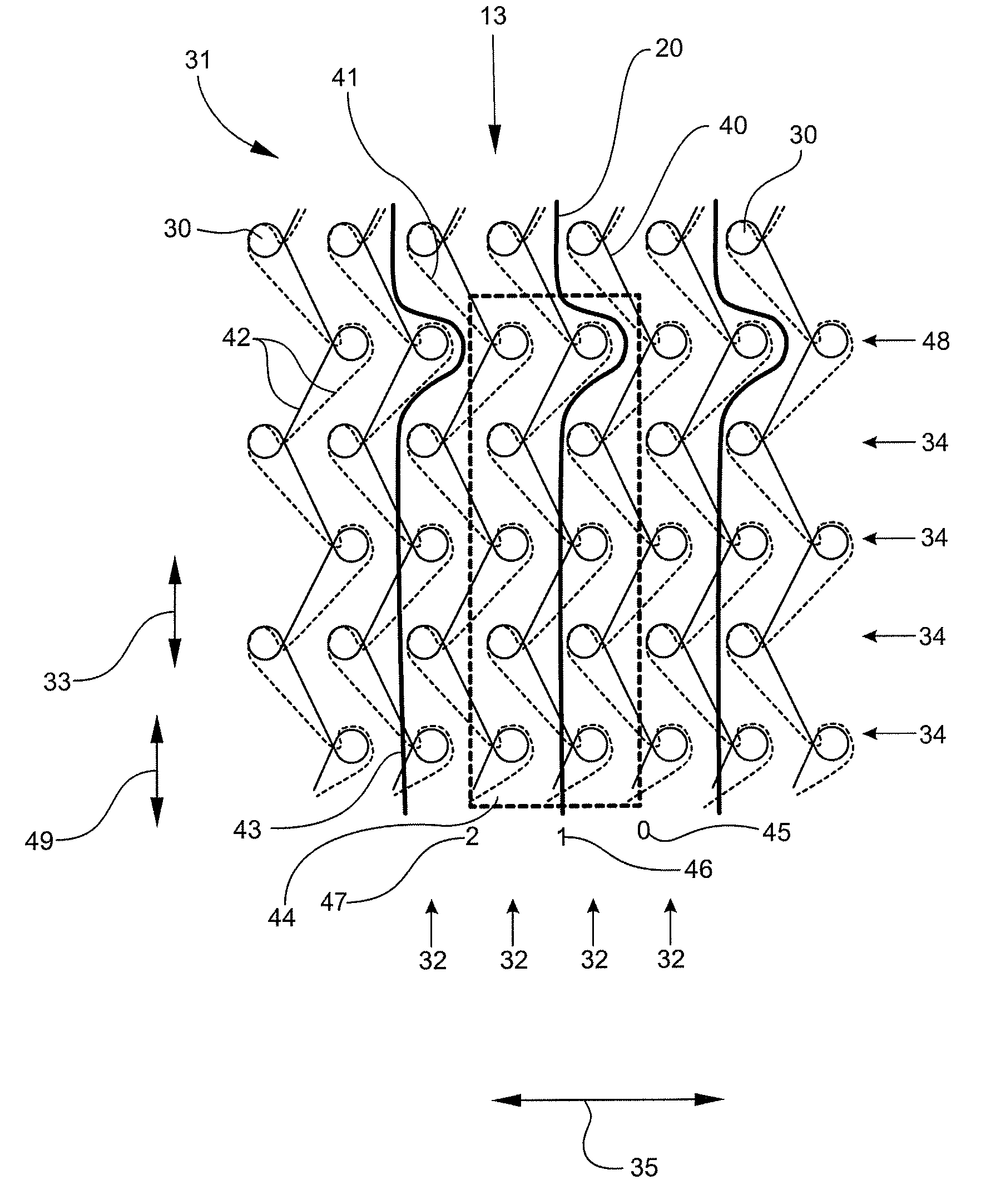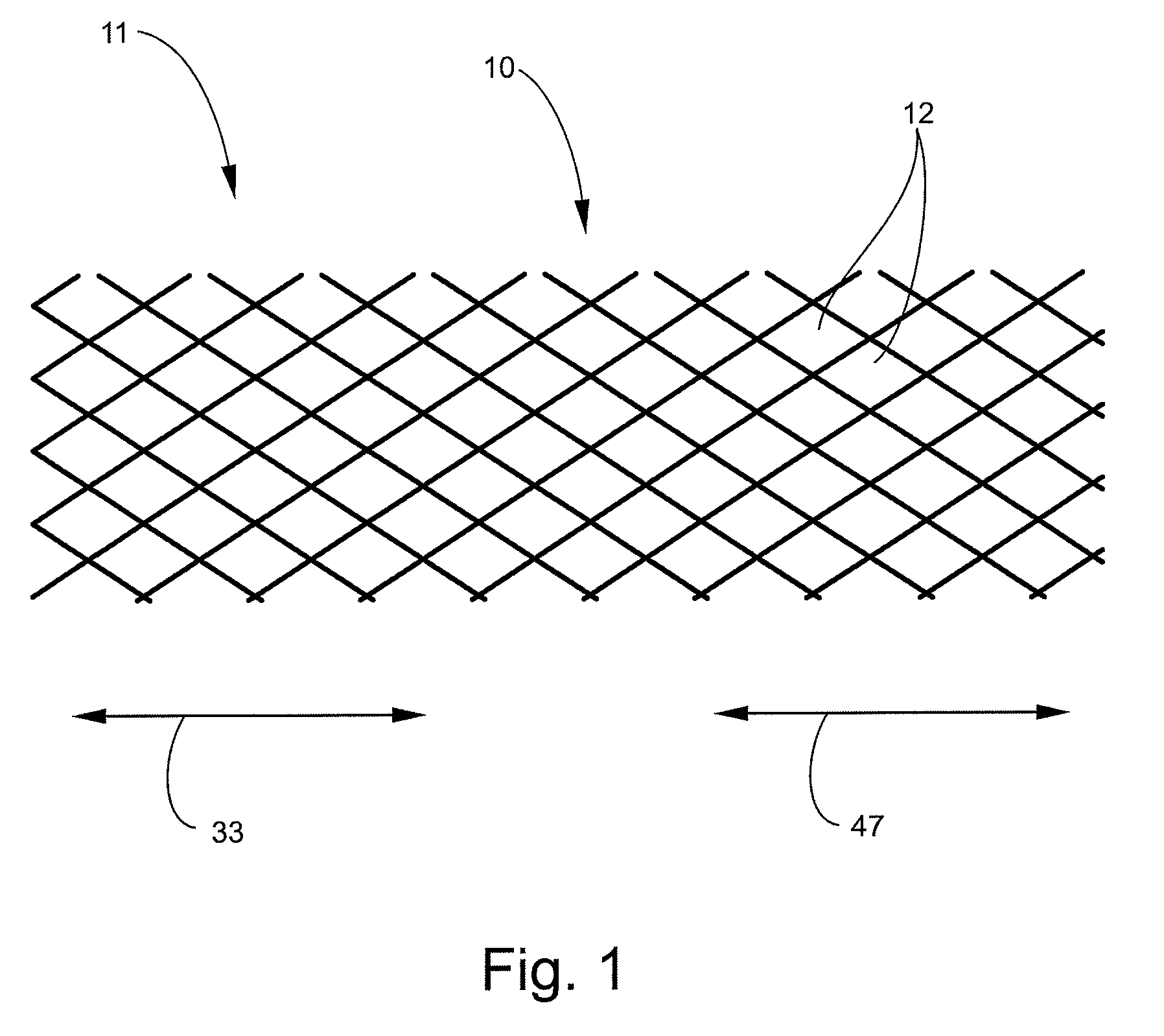Elongation resistant fabric and devices
a fabric and fabric technology, applied in the field of elongation resistant fabrics and devices, can solve the problems of affecting the performance of the fabric, and affecting the performance of the fabri
- Summary
- Abstract
- Description
- Claims
- Application Information
AI Technical Summary
Benefits of technology
Problems solved by technology
Method used
Image
Examples
Embodiment Construction
[0016]Some embodiments of the present invention can provide an elongation resistant fabric and devices comprising the elongation resistant fabric. FIGS. 1 and 2 illustrate embodiments of such an elongation resistant fabric 10. FIG. 1 shows an embodiment of a mesh fabric 11 having a particular size (relatively large size) mesh pore 12 and a reduced elongation characteristic. FIG. 2 shows an embodiment of an elongation resistant mesh fabric stitch diagram 13. In such embodiments, the mesh fabric 11 can maintain properties that allow the mesh fabric 11 to function for its intended use. Such properties can include, for example, the size and / or shape of the mesh openings, or pores 12, which can remain relatively unchanged during use of the mesh fabric 11. Such embodiments of the mesh fabric 11 can include a fabric construction 31 comprising an elongation resistant yarn 20. The elongation resistant yarn 20 can serve as a tensioning mechanism that can restrict elongation of the mesh fabric...
PUM
 Login to View More
Login to View More Abstract
Description
Claims
Application Information
 Login to View More
Login to View More - R&D
- Intellectual Property
- Life Sciences
- Materials
- Tech Scout
- Unparalleled Data Quality
- Higher Quality Content
- 60% Fewer Hallucinations
Browse by: Latest US Patents, China's latest patents, Technical Efficacy Thesaurus, Application Domain, Technology Topic, Popular Technical Reports.
© 2025 PatSnap. All rights reserved.Legal|Privacy policy|Modern Slavery Act Transparency Statement|Sitemap|About US| Contact US: help@patsnap.com



